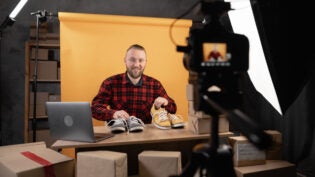
Reading the Numbers
This data originally appeared in much of the research around Challenger, led by Brent Adamson, Matt Dixon, and Nick Toman. But let’s reflect on the implications of data and what it means to our customers and our own organizations.
- These were funded efforts. That is these customers had committed funding to address a problem or opportunity. Of course they had to justify their decisions, but their organizations were committed to addressing the issues.
- The reasons for these failures were varied, but few attributed to the customer ability to select a solution. Sometimes it was a shift in organizational priorities. More often, it was the inability of the customer to successfully navigate their buying journey; to align agendas and interests, to manage the problem solving and buying process to a successful. Stated differently, they get lost or they lose interest.
- We shouldn’t be surprised, research by Morten Hansen and others show high failure rates of internal projects, so it shouldn’t be surprising that so many buying efforts fail, ending in no decision made.
But what does this mean for the customer? It’s a huge loss! They started the process with the expectation of solving a problem, addressing an opportunity, making a change or improvement. It wasn’t just a desire to buy something, but they were doing this change to produce business results.
So when we see the 54% failure rate, what leaps out is the billions of dollars of lost opportunity–increases in revenues, increases in profitability, better growth, better ability to serve their people, customers and community. In the most extreme cases, repeated failures may cause the failure of the organization.
Invest in Collective Success
Let’s look at this data selfishly, from a seller point of view. It also represents billions of dollars of lost opportunity. For all intents, we produce our results only out of winning our share of the 46% that succeed. At the same time, we struggle to grow, we struggle to find new opportunities. Yet those opportunities are right in front of us, we are already working on them. We don’t have to find them, all we have to do is help our customers successfully navigate their buying journey.
This 54% has to be unacceptable–to our customers who are trying to grow and improve, and, selfishly, to us in achieving our own goals.
We have to start thinking, “How do we help our customers succeed in their buying journeys?” The answer to this question is less because they can’t chose a product, but they fail before they even get to that point in the process. So we aren’t providing them the help they most need, and the things that contribute most to our own success and growth.
Imagine this, what if, collectively all sellers sought to reduce that 54%. It would never be eliminated, but let’s set a BHAG for ourselves. What if over the next 5 years, we reduced no decision made to 30%? Run the math–it doesn’t require you to change your win rates, it doesn’t require you to hire more sales people, or invent new programs or even invest in new technology. All it takes is helping customers who are already committed to buying something succeed.
If we helped our customers make those reductions, imagine what it means to their businesses. Imagine how helping them succeed will change the value we create with them and our ability to build our relationships.
Think of what it means in terms of our own growth and success. Right now, we are, in effect, leaving so much money on the table. What if, through helping our customers succeed in their buying efforts, we started taking enormous amounts of money off the table. Run the math–we are only getting 46%, reducing from 54% to 30% would drive purchase growth of more than 50%.
Yes, I’m playing math games, run your own numbers. Look at the trailing 2 years of deals that never closed, that disappeared because the customer failed in their buying journey. What could you do differently, to reduce that failure rate? What would it mean to your ability to achieve your own goals.
We struggle to find deals to achieve our goals. Sadly, they are already in front of us, we are engaged in a huge number of them. But we aren’t providing the help our customer most need.
It’s a tragedy–for our customers and for our organizations.












